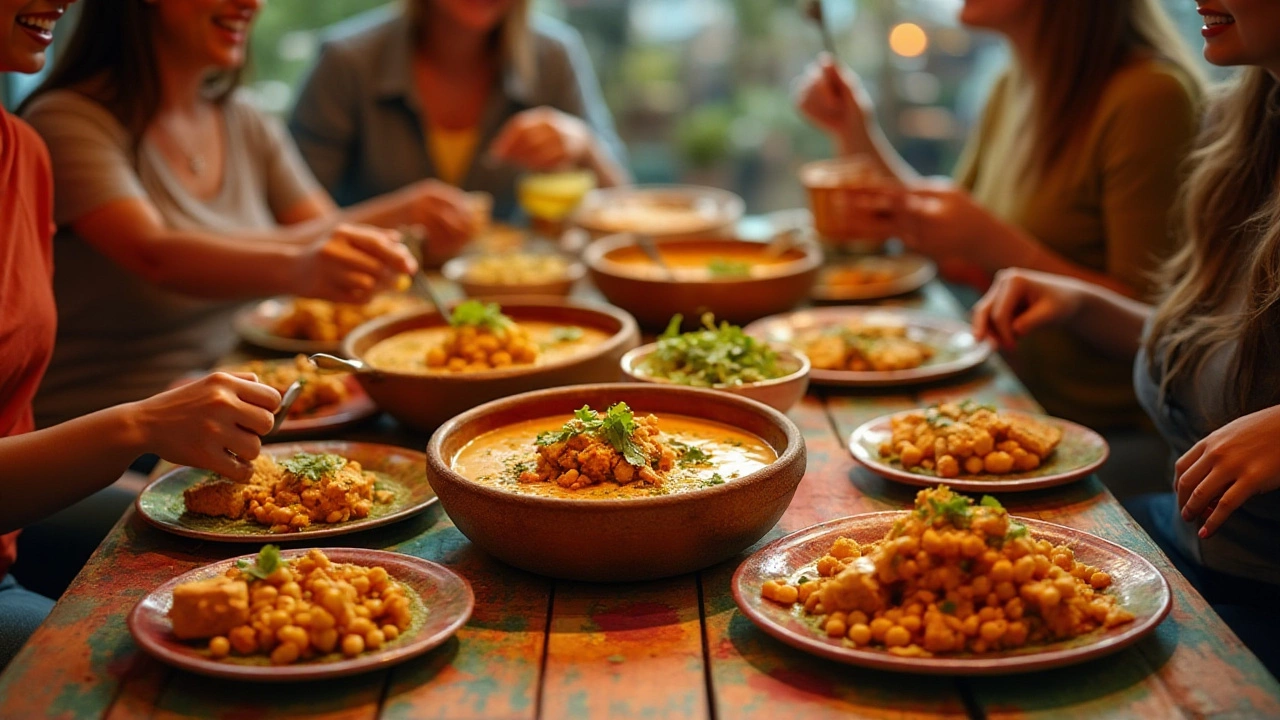Indian Restaurant Guide: What to Know Before You Order
Walking into an Indian restaurant can feel like stepping into a spice market. The aromas, the colors, the endless menu options—it's exciting but also a little overwhelming. You might wonder which dish will satisfy your cravings without blowing your calorie budget, or how to make sure you get the authentic flavors you love. This guide breaks down the most useful answers, so you can order with confidence and enjoy every bite.
Choosing the Healthiest Dishes
Most people think Indian food is heavy, but there are plenty of lighter options that still pack flavor. Look for dishes that are tomato‑based or feature grilled proteins like tandoori chicken. According to our "Is Tandoori Chicken Grilled or Fried?" article, tandoori is grilled in a hot clay oven, which means less oil and a smoky taste. Pair it with a side of dal or a vegetable stir‑fry for a balanced plate.
If you’re watching carbs, skip the naan and go for a bowl of brown rice or a small portion of quinoa. Our "Best Indian Curries for Weight Loss" post highlights lentil‑rich dal, chickpea‑based chana masala, and spinach‑laden palak paneer (ask for less cream) as smart swaps that keep you full without the excess calories.
For dessert, don’t automatically reach for gulab jamun. The "Which Indian Sweet Is Healthy?" guide shows that jaggery‑sweetened payasam or a fresh fruit chaat can satisfy a sweet tooth while keeping sugar in check. Portion control matters—one small bite is enough to enjoy the flavor without overindulging.
Flavor Hacks for Classic Favorites
Biryani often gets a reputation for being tricky, but the "Is Biryani Hard to Cook?" article simplifies it. The secret is layered rice and meat, cooked on low heat. When you order biryani, ask the server if they use whole spices like cardamom, cloves, and cinnamon—these give that signature aroma. If you see “black things” in your bowl, don’t panic; they’re whole spices like black cardamom that add depth (read our "Black Things in Biryani" piece for details).
Chutney is another staple that can elevate any meal. Our "Best Ways to Eat Chutney" post recommends pairing coconut chutney with dosas, mint chutney with grilled kebabs, and tomato chutney with fried samosas. If you’re unsure whether a chutney is cooked with the lid on or off, the "Do You Cook Chutney With the Lid On or Off?" guide gives a quick rule: keep the lid off for fresh, thin chutneys and on for thicker, cooked versions.
Finally, don’t forget the power of spice slang. Knowing that “curry” can refer to a gravy or a dry roast helps you communicate your preferences. Our "Indian Curry Slang" article breaks down the most common nicknames, so you can tell the waiter you want a “dry chicken masala” instead of a watery curry.
Overall, ordering at an Indian restaurant doesn’t have to be a guessing game. Pick grilled proteins, ask about whole spices, balance your plate with lentils and veggies, and finish with a smart sweet. With these tips, you’ll walk out feeling satisfied, healthy, and confident that you got the best of what Indian cuisine has to offer.
Discover the Healthiest Indian Dishes to Enjoy at Restaurants
Indian cuisine is renowned for its vibrant flavors and diverse dishes, offering a range of healthy options that cater to various dietary preferences. By understanding the ingredients and preparation methods, one can select meals that are not only delicious but also nutritious. This article delves into what makes certain dishes stand out in terms of health benefits, guiding you through making informed choices the next time you dine at an Indian restaurant.
